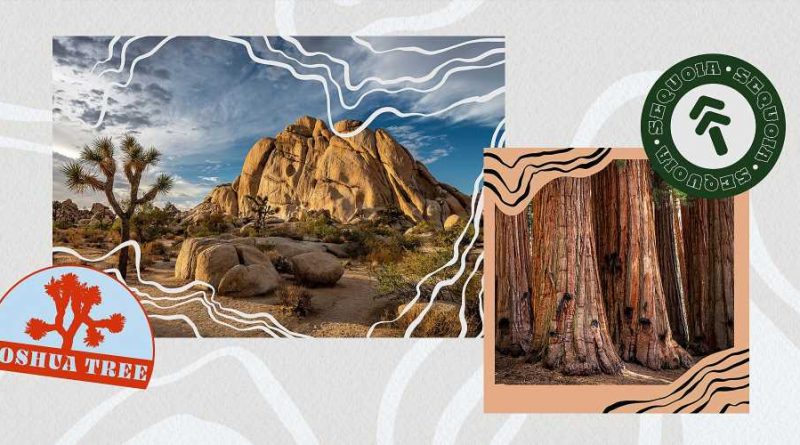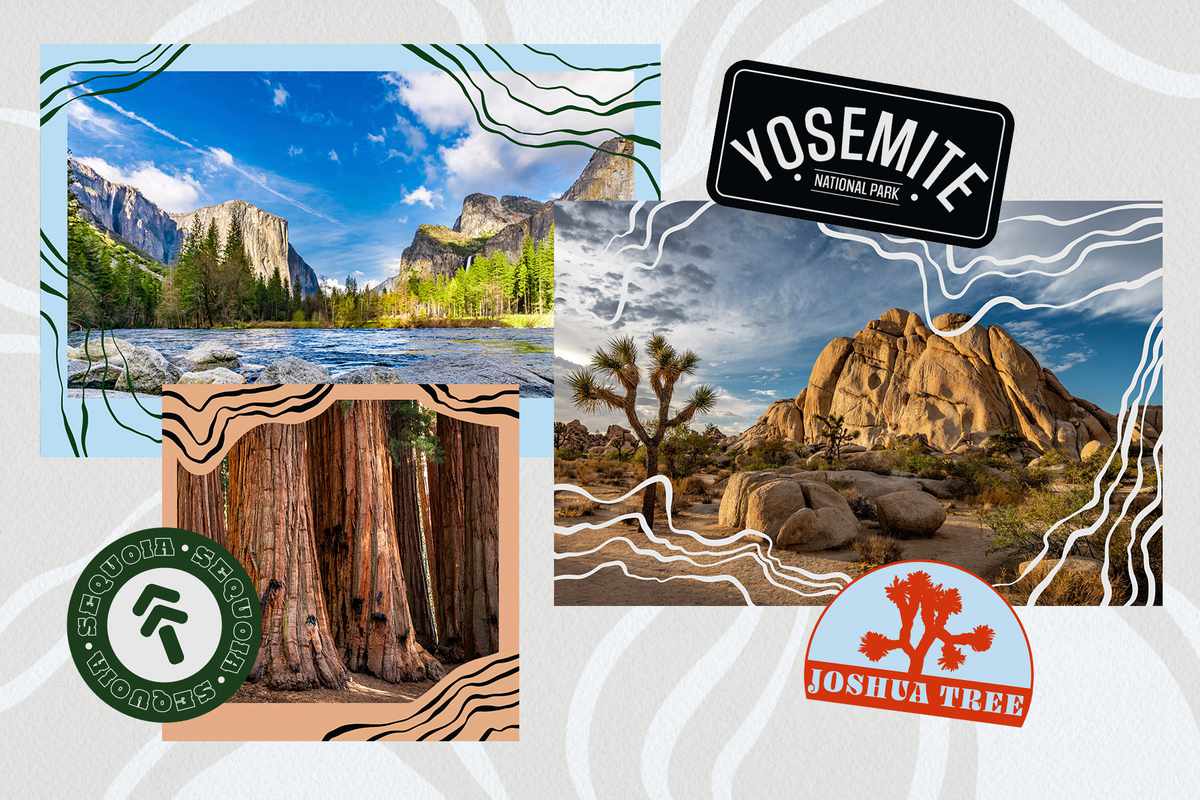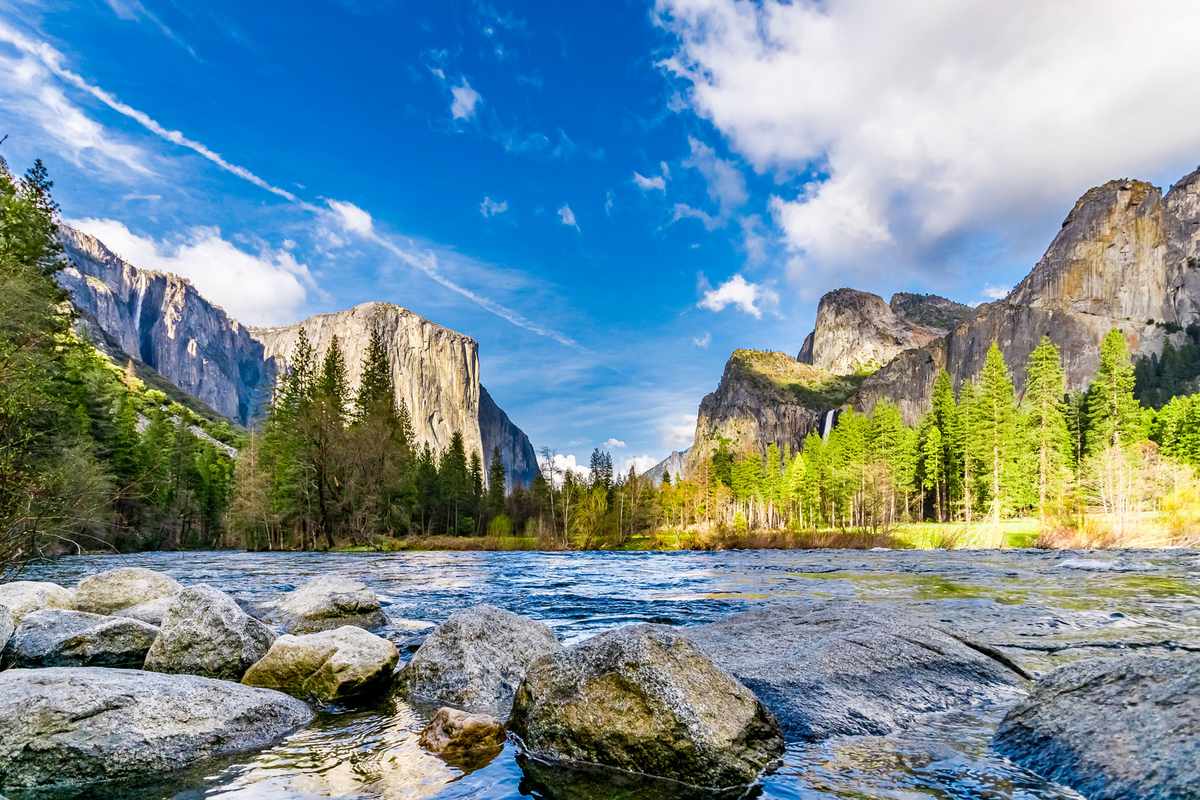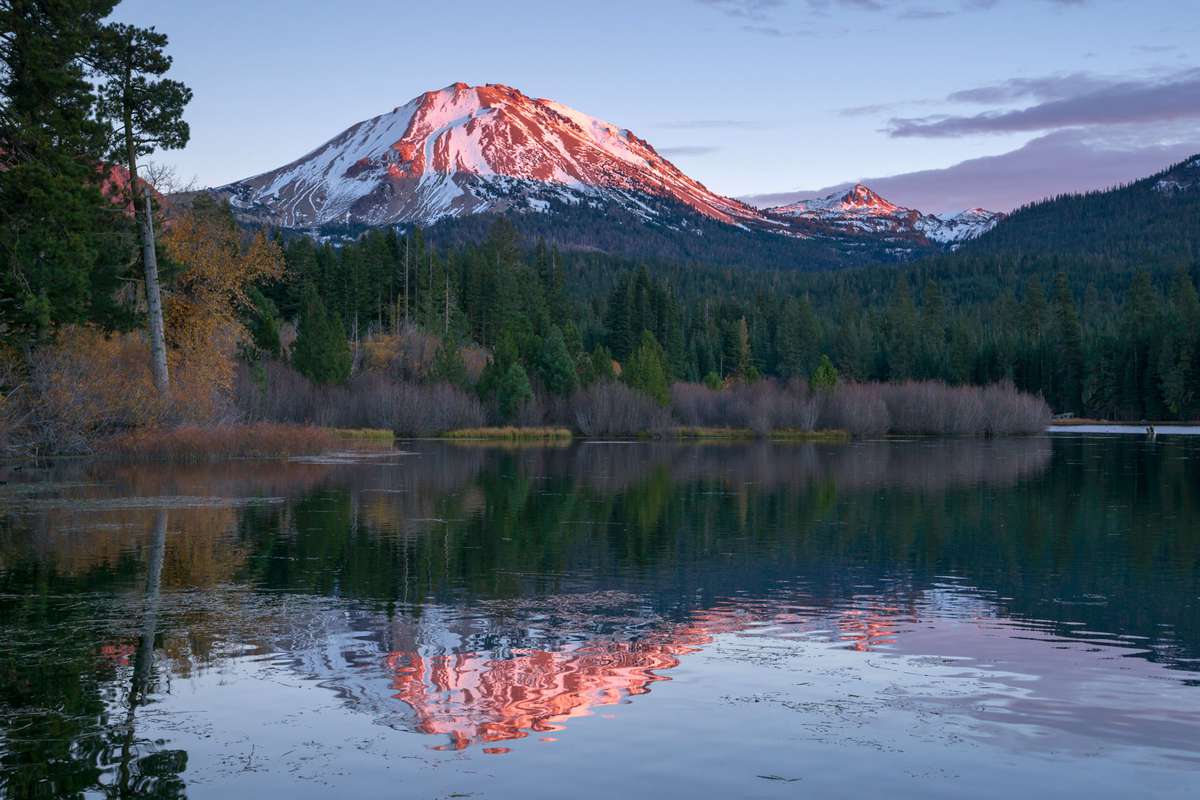The 5 Best California National Parks, According to a Writer Who's Visited Them All
As the most populous state in the union and one of the most geologically diverse, it's no wonder that California boasts more tantalizing national parks than any other state. Though Yellowstone is often revered as becoming America's first national park in 1872, it was actually Yosemite Valley, back in 1864, that was signed into being the first protected area in the country by President Lincoln, solidifying California's place as a bastion of national wonders.
Now, with nine national parks within its borders, there's something for adventure seekers of all sorts to enjoy — from colossal granite domes and 3,000-year-old trees to sled-worthy sand dunes. Here are a few of our favorites.
Yosemite
Touted as the birthplace of "America's best idea," it doesn't come as a surprise that Yosemite is as awe-inspiring as it is diverse. The most popular section of the park is Yosemite Valley, a jaw-droppingly gorgeous, glacially carved basin with towering, misty waterfalls and granite features like El Capitan and Half Dome soaring up from the forested floor. To the north is Tuolumne Meadows, a high-elevation alpine paradise full of backpacking opportunities, craggy peaks, and, of course, lush alpine meadows. The park is a haven for serious hikers and casual road trippers alike.
Joshua Tree
So much more than just the title to a U2 album, Joshua Tree has long been a favorite haunt for rock climbers, hikers, and desert sunset seekers. The massive quartz monzonite boulders and its namesake Seussian yucca trees lend a quirky feeling to the 790,636-acre park. Easily accessible from Los Angeles and San Diego, Joshua Tree was the 10th most visited national park in the country in 2020. Kids will love scrambling around the bumpy landscape on the Skull Rock trail, while more avid hikers might want to explore the seven-mile trek to Lost Palms Oasis.
Lassen Volcanic
Similar to a mini-Yellowstone, Lassen Volcanic is home to eight different geothermal areas, with hissing gas vents, bubbling mud pots, and boiling aquamarine pools. A three-mile round-trip hike to Bumpass Hell is the best and most accessible trail to check out these incredible wonders up close. The park is named after 10,457-foot Lassen Peak, a now-dormant volcano that last erupted from 1914 to 1917. Visitors can reach the summit on a leg-busting five-mile romp or simply gaze up at its spectacular prominence from the shores of Lake Helen.
Sequoia
Home to the famous ancient sequoia trees, the 404,064-acre expanse of Sequoia National Park is much more than a walk in the woods. Forest bathers seeking shade under the enormous, old growth canopy won't want to miss a peek at General Sherman, the largest living tree in the world. View seekers should check out the sunset from 6,725-foot Moro Rock, while adrenaline junkies will flip for the chance to summit Mount Whitney, the highest point in the lower 48.
Death Valley
As the biggest national park in the contiguous U.S. at over 3 million acres, Death Valley is a geological wonderland, often cited as the "park of superlatives." It's known for having the lowest point in North America, being the driest spot in the United States, and being the hottest place in the world. Furnace Creek and its myriad of hotels, campgrounds, and eateries serves as base camp for most visitors as they explore the colorful badlands of Zabriskie Point, take a scenic drive through the rainbow splotches of minerals at Artists Palette, tramp through the Mesquite Flat sand dunes, and crunch onto the salt flats of Badwater Basin.
Source: Read Full Article









